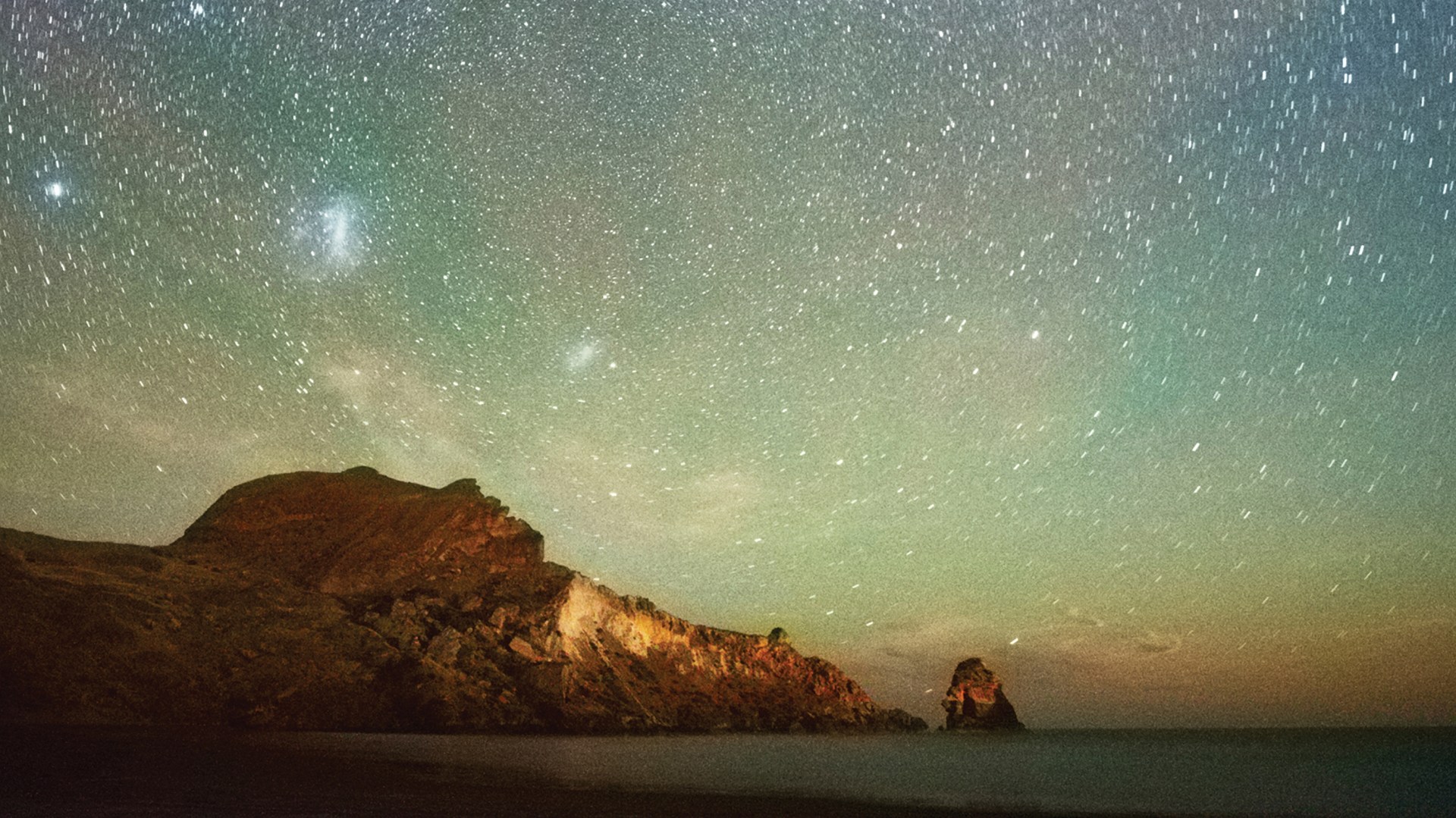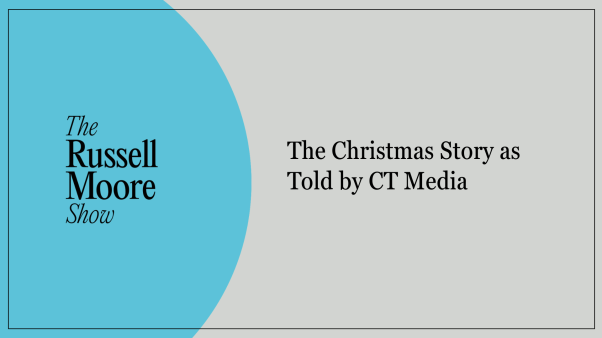We have learned a lot since God humbled Job by daring him to comprehend how Orion and the Pleiades held together. But some scientists and philosophers say our idea of the universe is still too small for the infinite mind of God.
"Creation is more vast than we've ever understood," says Gerald Cleaver, a physics professor at Baylor University. "We as humans have gone through stages, understanding reality to be much larger than it was before."
We first expanded our understanding of the cosmos from a single planet with an intriguing, sparkling sky overhead, to a system of planets circling the sun, then to a galaxy of stars. Now we know that our galaxy, comprising a hundred billion stars, is one part of a universe that includes immense superstructures containing thousands of galaxies—"Great Walls," astronomers call them, millions of light-years across. Imagining this expanse shames some of our finest minds into Job-like awe. Cleaver and others believe we might have to widen our view yet again.
"The vastness of reality makes me appreciate the vastness of the Creator," says Robin Collins, a philosophy professor at Messiah College in Pennsylvania. "I come into contact with it through just thinking about the universe itself. It serves as sort of an icon for me."
Cleaver and Collins say we might have a clearer answer than ever to God's later, more basic question for Job: Do you know the laws of the heavens? (38:33).
Cleaver works in a branch of theoretical physics called string theory, specifically M-Theory—the same theory that gives physicist and cosmologist Stephen Hawking the confidence, in his recent book with Leonard Mlodinow, The Grand Design, to declare philosophy dead and God unnecessary.
"To me [M-Theory] offers a Christian God whose creative ability is much larger than we ever could imagine before," Cleaver says.
They Broke God's Violin
At first, string theory at its simplest had a lyrical—or at least musical—explanation. Every particle in the universe was a tiny, one-dimensional string, and different particles existed because of the different ways a string could vibrate. Physicists say that, just as different vibrations produce different notes on a violin or cello, the vibrations of a string could produce an electron, a quark, a neutrino, and so on. That, the theory said, was how the universe worked.
Those were the days. By the mid-1990s, debates over the exact properties of strings had created five competing string theories. Princeton University's Edward Witten came up with a way to stitch them together, but the result was not really a "string" theory anymore. A new, single theory arose, called M-Theory, which remains so sketchy that theorists don't agree on what the M stands for. It might be membrane.
In the old string-theory days, many theorists had come to believe that space had ten dimensions—the three directions that we see, with time as a fourth dimension, then six curled-up spatial directions that are too small to see unless you happen to be a string. M-Theory added an eleventh dimension, in which a lot seemed to be going on. In addition to one-dimensional strings, the eleventh dimension revealed multi-dimensional objects dubbed membranes (branes for short). Hidden from us with our three-dimensional perception, branes could be as small as a string or as large as a universe. In fact, some have suggested that our universe is a massive brane inside a much larger reality.
The violin metaphor doesn't really seem to encapsulate all this. But if experiments prove it accurate, M-Theory might solve several technical problems that have previously kept scientists from creating a unified "Theory of Everything." At the moment, M-Theory is the best chance scientists have for arriving at a complete picture of the universe. Some M-Theorists, Cleaver included, think ultimately it will take us even further: that our entire universe—planets, stars, Great Walls, and all—is just a "bubble" on an ocean of existence covered with many more like it.
Above the Heavens
These aren't Star Trek-style mirror universes, in which duplicates of each one of us live on parallel Earths where Hitler won the war or the Twin Towers never fell. The multiverse made possible in M-Theory predicts an incredibly diverse array of possible universes with different sets of physical laws—maybe as many as 10500 possible realities. We likely cannot ever reach them, and only a few would be hospitable to human life. Some suggest that universes are continually created, and maybe destroyed, as branes collide with one another.
According to Hawking, the multiverse eliminates the need for God. "M-Theory predicts that a great many universes were created out of nothing," he writes in The Grand Design. "Their creation did not require the intervention of some supernatural being or god. Rather, these multiple universes arise naturally from physical law."
But Collins says Hawking can't escape God that easily: If the universe arose from the laws of physics, then who designed the laws of physics? Why does the multiverse work the way it does? Trying to apply science to the question of God, Collins said, "is where scientists are way overstepping their area of competence."
"One of the problems with those arguments is it really puts God … in a very small box," Cleaver says. "It portrays God as someone who can only fill in the gaps that science can't explain. As theists, we need to perceive God as the primary source, the fundamental laws of physics as the secondary."
To Cleaver, M-Theory's multiverse, with its dizzying variety, unending moments of new creation, and perhaps infinite scope, makes perfect sense as the work of "a God of the infinities, who creates eternally." If God is truly eternal, infinite, and self-consistent, Cleaver wrote in a 2006 paper, "We should expect God to create eternally and infinitely, or not at all."
A scientist stepping on philosophy's turf? Maybe. But Collins expressed similar thoughts.
"Paul says in Romans 1 that creation manifests the eternal attributes of God—God's eternal and infinite power," Collins says. "You may expect an infinitely creative being to create more than one universe—in fact, many, and maybe more kinds of realities."
The Lion, the Klingon, and the Carpenter's Son
Once again, speculative fiction writers are way ahead of scientists. C. S. Lewis's Chronicles of Narnia includes one of the classic depictions of a multiverse in Western literature. The protagonists of The Magician's Nephew (1955) stumble into the Wood Between the Worlds, a quiet forest full of pools through which they can enter not just Earth and Narnia but countless universes stretching off into the distance. In the course of the story, the heroes see an old universe destroyed and a new one created—and meet the one Lord over all of them. And at the end of The Voyage of the Dawn Treader (1952), Aslan tells Edmund and Lucy, "You must begin to come close to your own world now …. There I have another name. You must learn to know me by that name."
If God did create multiple universes, Collins and Cleaver claim, he likely populated more than one.
"I've always had problems perceiving the infinite God that we believe in [as] creating life in just one spot," Cleaver says. "Over the entire past and future of humankind, there'll probably be no more than a few hundred billion humans to interact with God on this earth. That is a finite number that does not make consistent theological sense to me."
Collins is intrigued by the possibility of a Messiah with two or more—even a million—faces. Since the Council of Chalcedon in A.D. 451, orthodox Christian theology has drawn a distinction between the divine nature and the human nature in the single person of Christ. There is no reason, Collins believes, that Christ's divine nature could not unite with other incarnational forms.
"Who's going to redeem the Klingons? And they're very much in need of redemption, as we know from various Star Trek series," Collins quips. "God the Son, being infinite as he is, could take on the Klingon nature, human nature—you know, a Klingon version of Jesus.… So the traditional formula, which is the standard orthodoxy, is actually very compatible with the multiverse idea."
Whether or not we discover a multiverse, Cleaver wants to see the church address the idea of life elsewhere.
"The Catholic Church is far ahead of the Protestant churches on this," Cleaver says. "The Catholic Church had a conference on the possibility of life elsewhere in the universe within the past few years and invited both leading theologians and scientists. The Protestant churches should be doing the same thing."
To Cleaver, M-Theory's multiverse, with its dizzying variety, unending moments of new creation, and perhaps infinite scope, makes perfect sense as the work of 'a God of the infinities, who creates eternally.'
When the Universes Sang
Theoretical physicists like Cleaver spend time in the land of possibly and potentially. Experiments are in the works at places like Europe's Large Hadron Collider that might possibly determine the truth of M-Theory. A large number of scientists doubt that M-Theory is anything more than a collection of fascinating but fictional equations. And even if M-Theory is correct, that doesn't guarantee a multiverse.
Collins and Cleaver remind us that we serve a God who is easily capable of holding 10500 universes in the palm of his hand.
"The beauty of it suggests that this is the true picture of reality," Cleaver says. "The beauty of a theory is extremely important."
That's not just Cleaver the Christian talking. It's also Cleaver the physicist: "The aesthetics of the mathematics helps us to choose what we think is the more correct theory. The more unifying a theory is, the more beautiful the mathematics are, the more likely that it is true. That is a universal concept among scientists."
"The universe is structured for beauty and elegance," Collins says, noting Paul Dirac, a famously nonreligious physicist, who said in 1963, "It is more important to have beauty in one's equations than to have them fit [an] experiment… . If one is working from the point of view of getting beauty in one's equations, and if one has really a sound insight, one is on a sure line of progress."
"To me, that is showing the beauty and the order in the creative nature of God," Cleaver says. "It allows us to expect science to reveal physical truth to us, that the universe—or the multiverse—is not just some random existence that happens to be."
Trevor Persaud is Christianity Today's editorial resident.
Copyright © 2010 Christianity Today. Click for reprint information.
Related Elsewhere:
Philosopher John Haldane wrote a critique of Stephen Hawking and Leonard Mlodinow's Grand Design in the January issue of First Things.
Previous Christianity Today articles on science and theology include:
String Theory and Heaven | Author Dinesh D'Souza says new scientific thinking bolsters the case for life after death. (December 16, 2009)
Science in Wonderland | Getting some perspective (250 million years' worth) on the evolution controversy. (April 1, 2006)
The Dick Staub Interview: John Polkinghorne | The 2002 Templeton Prize winner sees the Bible as the laboratory notebook of the Holy Spirit. (November 1, 2002)










